Keep Current with the Latest in Cell Biology Research
Block title
Telomir Pharmaceuticals Reports New Data Showing Telomir-1 Resets Cancer’s “Kill-and-Clean” Defense Systems in an Aggressive Prostate Cancer Model, Outperforming Rapamycin and Chemo
[Telomir Pharmaceuticals, Inc. ] Telomir Pharmaceuticals, Inc. reported new preclinical data from an in vivo study in mice bearing human aggressive prostate cancer tumors evaluating DNA-methylation changes in two key defense genes - CASP8 and GSTP1 - following treatment with oral Telomir-1, Rapamycin, chemotherapy, and combination regimens.
Prostate Cancer Foundation Honors Maha Hussain, MD, FACP, FASCO, Recipient of the First PCF Women in Science Lifetime Achievement Award
[PCF] The Prostate Cancer Foundation (PCF) announced the first-ever recipient of the PCF Women in Science Lifetime Achievement Award, Maha Hussain, MD, FACP, FASCO, the Genevieve Teuton Professor of Medicine at Northwestern University Feinberg School of Medicine.
ZDHHC2-Dependent Palmitoylation Dictates Ferroptosis and Castration Sensitivity in Prostate Cancer via Controlling ACSL4 Degradation and Lipid Peroxidation
[Advanced Science] Scientists developed a small-molecule ZDHHC2 inhibitor, TTZ1, which restores ACSL4 protein, reactivates ferroptosis, and reverses enzalutamide resistance in CRPC cell lines and patient-derived xenograft models.
Collagen-Binding IL-12-Armoured STEAP1 CAR-T Cells Reduce Toxicity and Treat Prostate Cancer in Mouse Models
[Nature Biomedical Engineering] Researchers showed that collagen-binding domain-fused IL-12 secreted from CAR-T cells to target human six transmembrane epithelial antigen of prostate 1 (STEAP1) is retained within murine prostate tumors.
Pitavastatin Is a Novel Mcl-1 Inhibitor That Overcomes Paclitaxel Resistance in Triple-Negative Breast Cancer
[Experimental Hematology & Oncology] Researchers analyzed the impact of pitavastatin on TNBC cells was assessed in vitro by examining cell viability, apoptosis, mitochondrial function, and effects on cancer stem cell properties.
Genetic Regulation of the Estrogen Receptor and Inherited Predisposition to Breast Cancer
[Proceedings of the National Academy of Sciences of the United States of America] Scientists evaluated 136 families for coinheritance of breast cancer with each of 79 common variants reported as high-confidence “risk alleles” for breast cancer by meta-analyses of genome-wide association studies.
SARS-CoV-2 mRNA Vaccines Sensitize Tumours to Immune Checkpoint Blockade
[Nature] Scientists showed that mRNA vaccines targeting SARS-CoV-2 also sensitize tumours to immune checkpoint inhibitors. In preclinical models, SARS-CoV-2 mRNA vaccines led to a substantial increase in type I interferon, enabling innate immune cells to prime CD8+ T cells that target tumour-associated antigens.
Mycobacterium Tuberculosis Acr1 Protein Mitigates Experimental Autoimmune Encephalomyelitis Symptoms by Generating Myeloid-Derived Suppressor Cells and Regulatory T Cells
[Immunology] Researchers observed that Acr1 skews the differentiation of dendritic cells into functionally competent myeloid-derived suppressor cells that chiefly secrete immunosuppressive molecules, expand regulatory T cells and attenuate inflammatory responses.
Immunotherapy for Tuberculosis: Current Strategies and Future Directions
[Military Medical Research] The authors explore the advancements in diverse tuberculosis immunotherapeutic strategies, including efficacy, safety, and administration methods.
Fundamental Role of Spatial Positioning of Mycobacterium Tuberculosis in Mycobacterial Survival in Macrophages
[Nature Communications] Scientists determined the spatial-localization of M. tuberculosis inside macrophages with reference to the nucleus. Few M. tuberculosis cells are perinuclear, while most are peripheral.
Bioenergetic Reprogramming of Macrophages Reduces Drug Tolerance in Mycobacterium Tuberculosis
[Nature Communications] Investigators found that macrophages with high oxidative phosphorylation and low glycolysis harbor reductive, drug-tolerant Mycobacterium tuberculosis (Mtb), whereas glycolytically active macrophages generate mitochondrial ROS via reverse electron transport, imposing oxidative stress on Mtb and enhancing drug efficacy.
Spatial Gene Expression Analysis Reveals Pathological Niches in Japanese Encephalitis Virus Neuroinvasion
[Proceedings of the National Academy of Sciences of the United States of America] Researchers investigated the early stages of Japanese encephalitis virus infection in the mouse brain employing a highly multiplexed spatial transcriptomics platform to map viral RNA and host gene expressions in intact brain sections at a single-cell resolution.

 Cancer Stem Cell News
Cancer Stem Cell News Cell Therapy News
Cell Therapy News Dermal Cell News
Dermal Cell News Endothelial Cell News
Endothelial Cell News ESC & iPSC News
ESC & iPSC News Extracellular Matrix News
Extracellular Matrix News Hematopoiesis News
Hematopoiesis News Hepatic Cell News
Hepatic Cell News Human Immunology News
Human Immunology News Immune Regulation News
Immune Regulation News
 Intestinal Cell News
Intestinal Cell News Mammary Cell News
Mammary Cell News Mesenchymal Cell News
Mesenchymal Cell News Muscle Cell News
Muscle Cell News Neural Cell News
Neural Cell News Organoid News
Organoid News Pancreatic Cell News
Pancreatic Cell News Prostate Cell News
Prostate Cell News Pulmonary Cell News
Pulmonary Cell News
